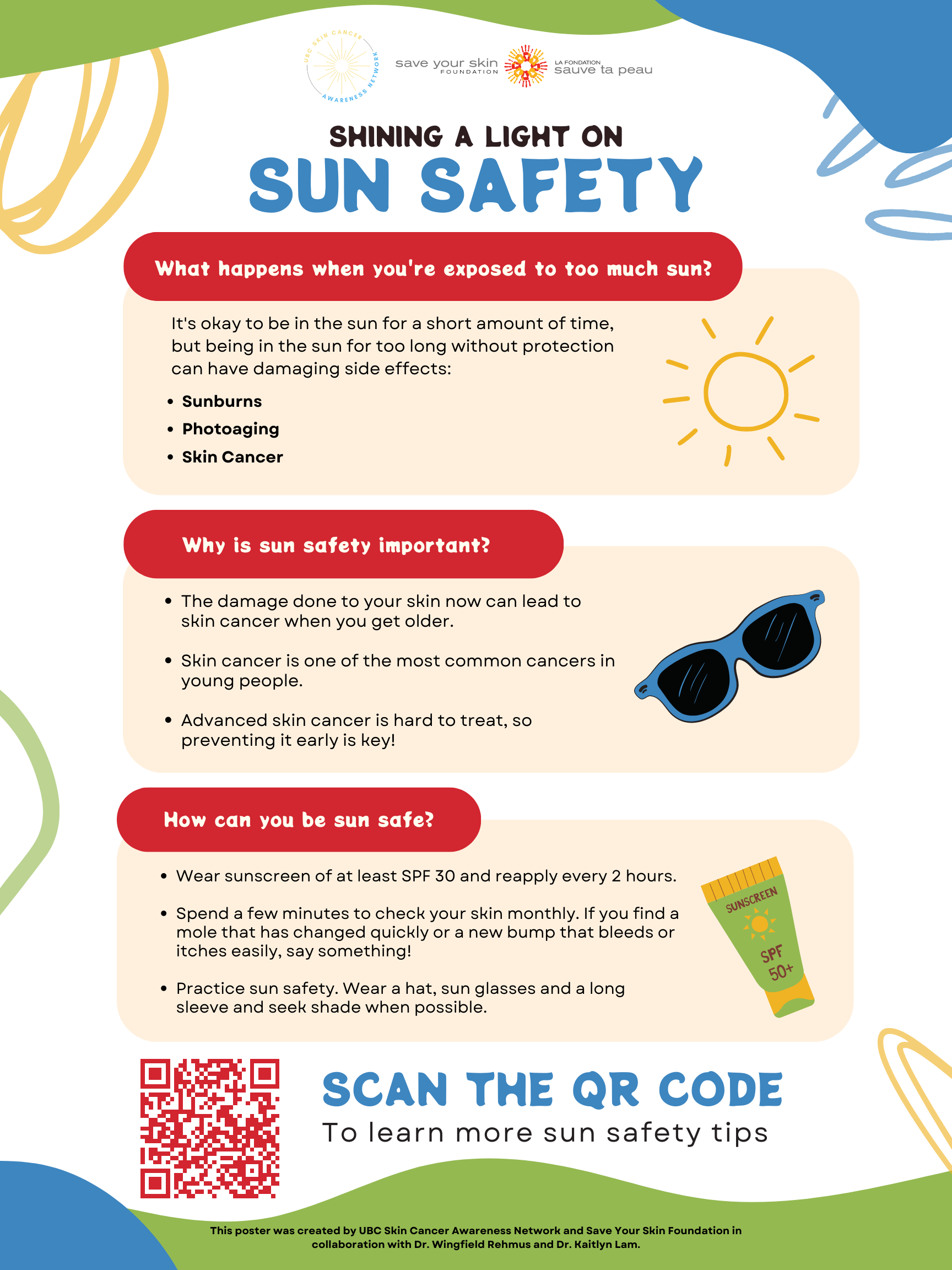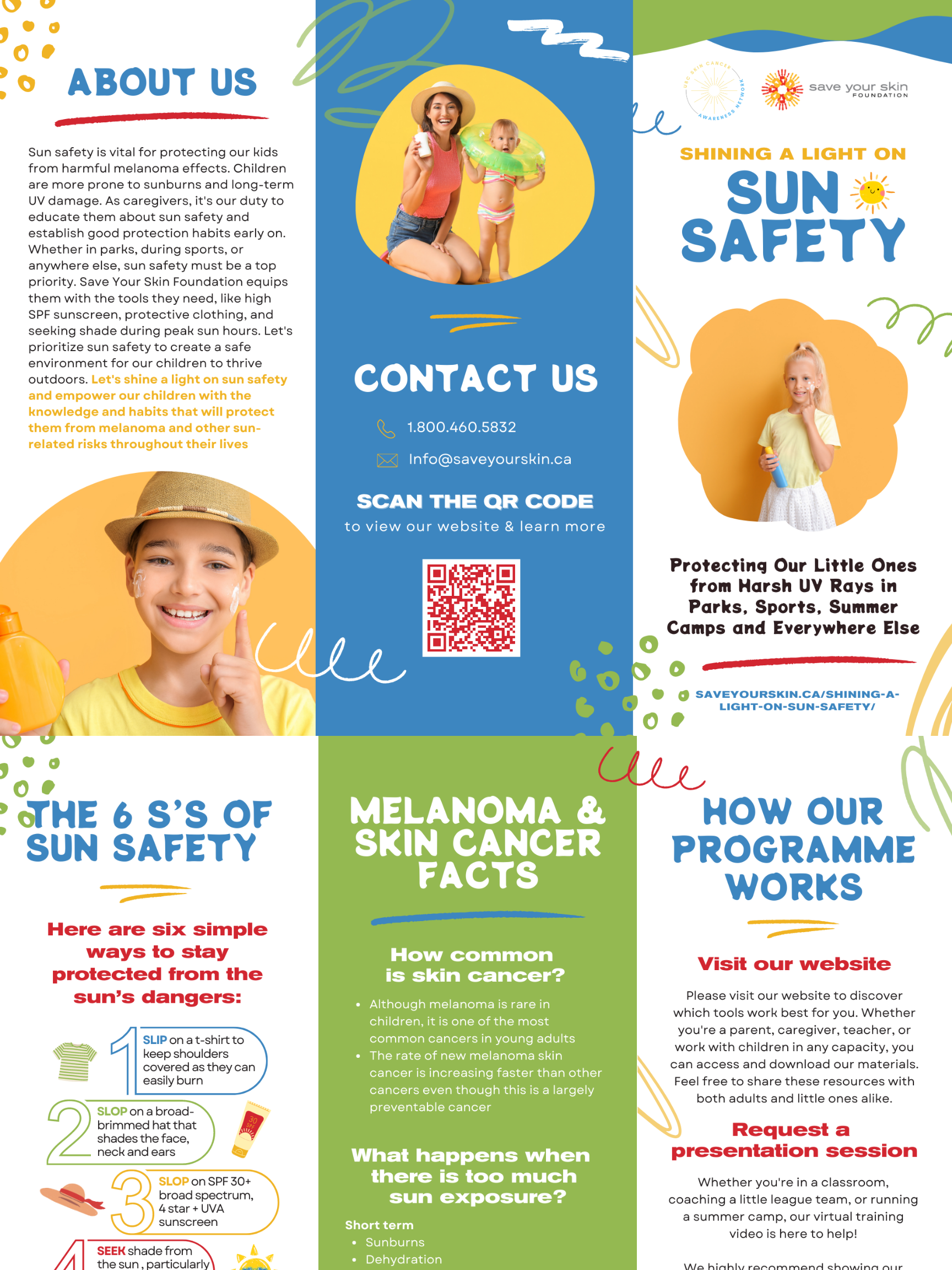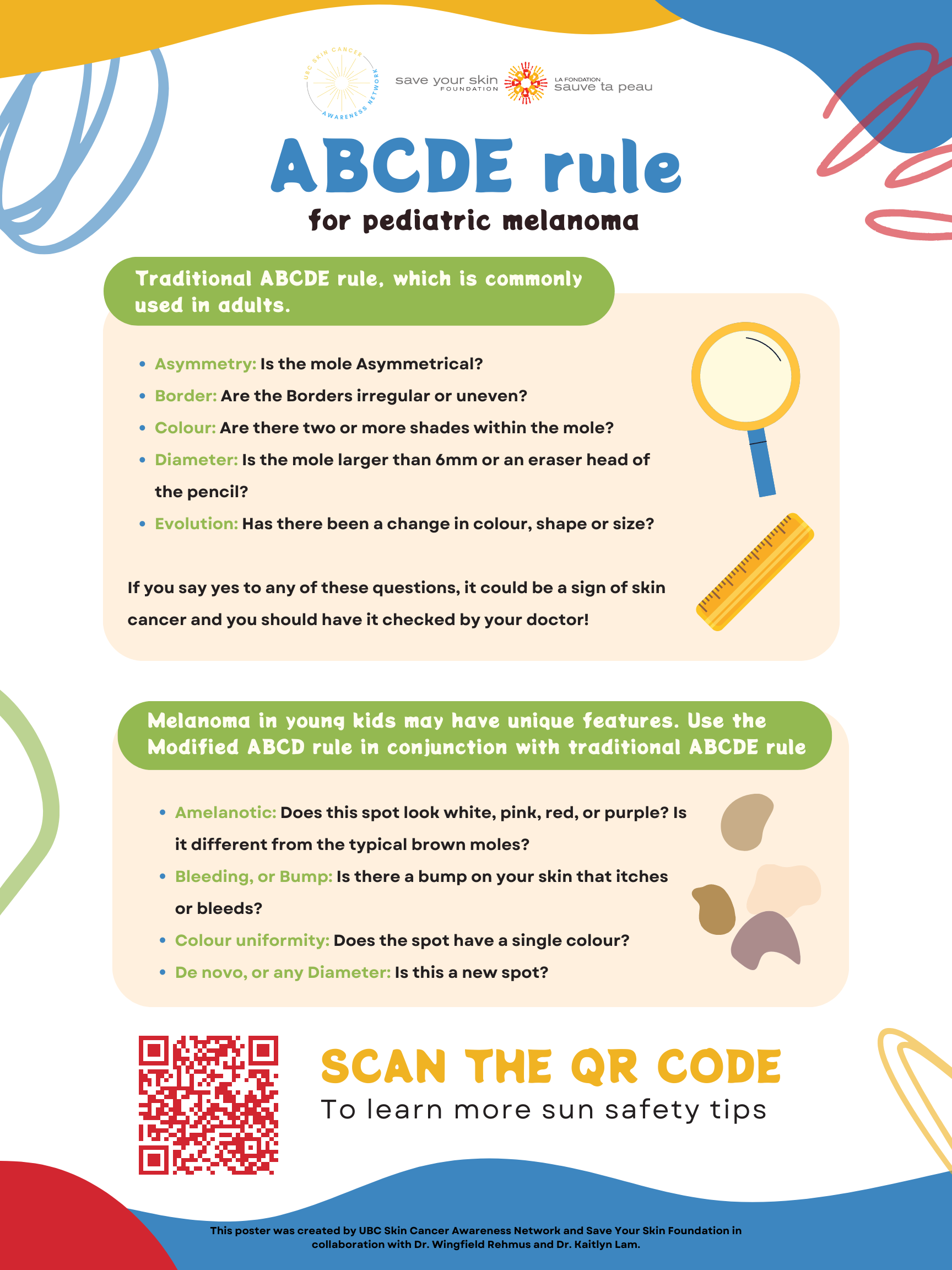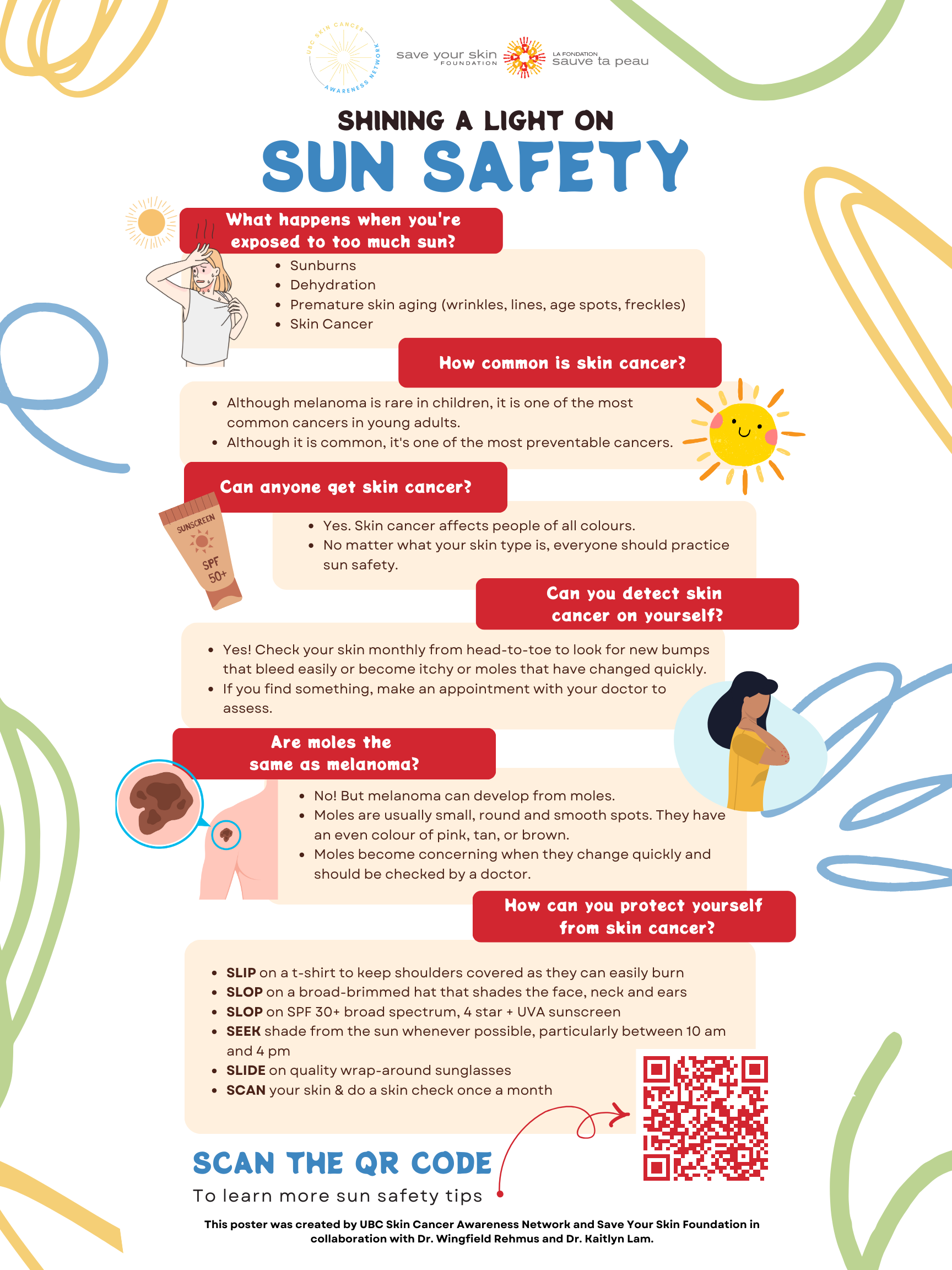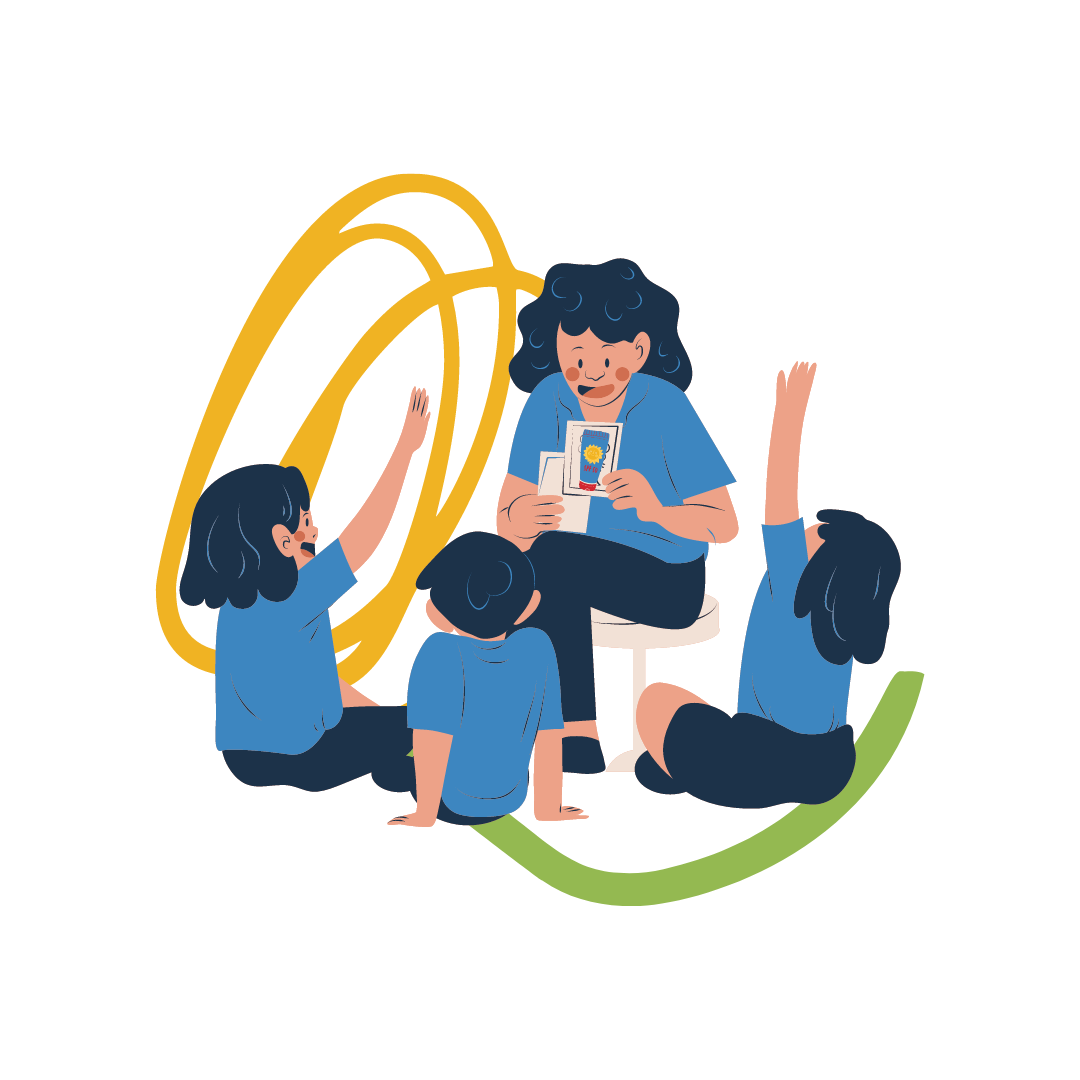
Sun safety is crucial when it comes to protecting our little ones from the harmful effects of melanoma. Children are more susceptible to sunburns and long-term damage from the sun’s ultraviolet (UV) rays. As caregivers, parents, teachers, and role models, it is our responsibility to ensure their well-being and educate them about the importance of sun safety. By instilling good sun protection habits early on, we can help safeguard their delicate skin and reduce the risk of melanoma later in life.
In parks, during sports activities, and wherever children may be, sun safety should always be a top priority. Save Your Skin Foundation want to make sure that they are equipped with the proper tools in order to understand sun protection measures, such as applying sunscreen with a high SPF, wearing protective clothing like hats and sunglasses, and seeking shade during peak sun hours. Encourage them to embrace these habits and understand why they are essential for their health. By prioritizing sun safety, we can create a safe environment for our children to thrive and enjoy outdoor activities without compromising their well-being. Let’s shine a light on sun safety and empower our children with the knowledge and habits that will protect them from melanoma and other sun-related risks throughout their lives.
All content on this page was created by Yvonne Deng, from UBC Skin Cancer Awareness Network, and Save Your Skin Foundation in collaboration with Dr. Wingfield Rehmus and Dr. Kaitlyn Lam.
How to Participate
Attention caregivers, parents, teachers, and role models! We have an exciting opportunity for you to introduce sun safety to the little ones in your care. Whether you’re in a classroom, coaching a little league team, or running a summer camp, our virtual training video is here to help!
We highly recommend showing our engaging video to children as it will help them grasp the importance of sun safety from a young age. To get started, simply fill out the form below, and we’ll provide you with the video along with a treasure trove of valuable resources.


The 6 S’s of Sun Safety
Here are six simple ways to stay protected from the dangers posed by the sun:
- SLIP on a t-shirt to keep shoulders covered as they can easily burn
- SLOP on a broad-brimmed hat that shades the face, neck and ears
- SLAP on SPF 30+ broad spectrum, 4 star + UVA sunscreen
- SEEK shade from the sun whenever possible, particularly between 10 am and 4 pm
- SLIDE on quality wrap-around sunglasses
- SCAN your skin & do a skin check once a month
What, Why & How?
What happens when there is too much sun exposure?
Excessive skin damage leads to:
- Sunburns
- Photoaging
- Skin cancer
About Sunburns:
- The skin’s reaction (inflammation) to UV radiation
- Sign of significant skin damage
Why is this important?
- The damage done to your skin now can lead to skin cancer when you get older
- Skin cancer is one of the most common cancers in young people
- Advanced skin cancer is hard to treat, so preventing it early is key!

- Wear sunscreen – at least SPF 30 and reapply every 2 hours
- Check your skin – spend 10 minutes a month checking for changes. If you see a change, say something!
- Practice sun safety – Wear a hat, sunglasses and a long sleeve and seek shade when possible. View our list of recommended retailers
- UV light directly damages DNA, causing mutations
- UV light produces activated oxygen molecules which damage DNA and other cell structure.
- Leads to localized immunosuppression, blocking the body’s natural defences against cancer
- This eventually leads to a cancerous tumour, which can spread to other parts of your body

Tips and Tricks
Use Sunscreen Regularly and Properly:
Use a good-quality UVA/UVB sunscreen, applied generously 30 minutes before going outside. Cover all exposed areas, including ears and feet, and repeat after several hours or after swimming or heavy sweating.
Limit Outdoor Time During Peak Sun Hours:
Stay in the shade as much as possible and limit sun exposure during peak midday hours between 10 am and 4 pm.
Cover Up:
Use clothes and hats as much as possible to cover up exposed skin while outside.
Clouds Can Fool You:
Just because it’s cloudy and/or windy, it doesn’t mean the sun can’t harm you. Take precautions even when it’s cloudy, particularly if it’s a thin cloud or alternating between sun and cloud.
It’s Not Just for Summer:
The sun can also be damaging to your skin in cooler seasons, even in winter and especially when there is snow and ice to reflect sunshine. Take precautions all year round!
Download our Free E-book for Children!
“Derm-X-Plorer” is an engaging book designed to educate children about sun safety and melanoma. Join Nicholas, a young boy, and his family as they spend a day at the beach. Along the way, Nicholas learns about the importance of sun safety and protecting one’s skin, regardless of skin tone. Follow Nicholas on his journey as he discovers a suspicious spot on his dad’s head and accompanies him to the dermatologist’s office.
- Written by Lorena Alexandra Mija, Santina Conte, Valeria Sygal, Catherine Keying Zhu and Naila Bouadi
- Illustrated by Naila Bouadi, Youssef El Sayes and Merelle Tadros
- Approved by Dr Renée A. Beach, Dr Audrey Lovett and Dr Jérôme Coulombe
There’s usually no simple answer as to why one person gets a disease like melanoma and another one doesn’t. You’re right, it certainly isn’t fair. However, these are the kinds of bad things that can happen throughout life and we have to deal with them as best we can. Remember that being sick doesn’t change how your parent or sibling feels or cares about you – in fact, they likely need your love even more.
No! No one knows for sure why some people get melanoma and other people don’t, but we do know that no one else causes it to happen in someone else.
Yes! It’s important for you to be able to continue to do the things you enjoy even though someone in your family is sick. In fact, seeing you having fun is likely one of the best things you can do to help them feel better. But be aware they might be tired or in a bit of pain sometimes so if they ask you to be quiet or do something else for a while, try to do what you’re asked, and help out with chores around home as much as you can too. That will help.
It’s impossible to say what will happen with this disease. Some people die from melanoma, but some don’t and live well for a long time. Ask a parent what they know about their disease, how it is being treated and what might happen. They won’t have any “for sure” answers, but ask them to share what they know and think. It’s important to talk and share your feelings.
You can’t catch melanoma from someone else. It’s not like a cold. So don’t worry about getting it from them and keep on hugging and kissing them like usual – they will likely want your hugs more than ever! However, as you grow up you should be careful about protecting your skin from the sun because that can be a cause of skin cancers like melanoma. Everyone should protect themselves against the sun, but having a parent who has melanoma can increase your risk of getting it later in life, so the more precautions you take the better it will be for you.
Making awareness and education available is crucial. Since 2006, the Foundation has worked to raise awareness of melanoma and non-melanoma skin cancers focusing on education, prevention and the need for improved patient care.


